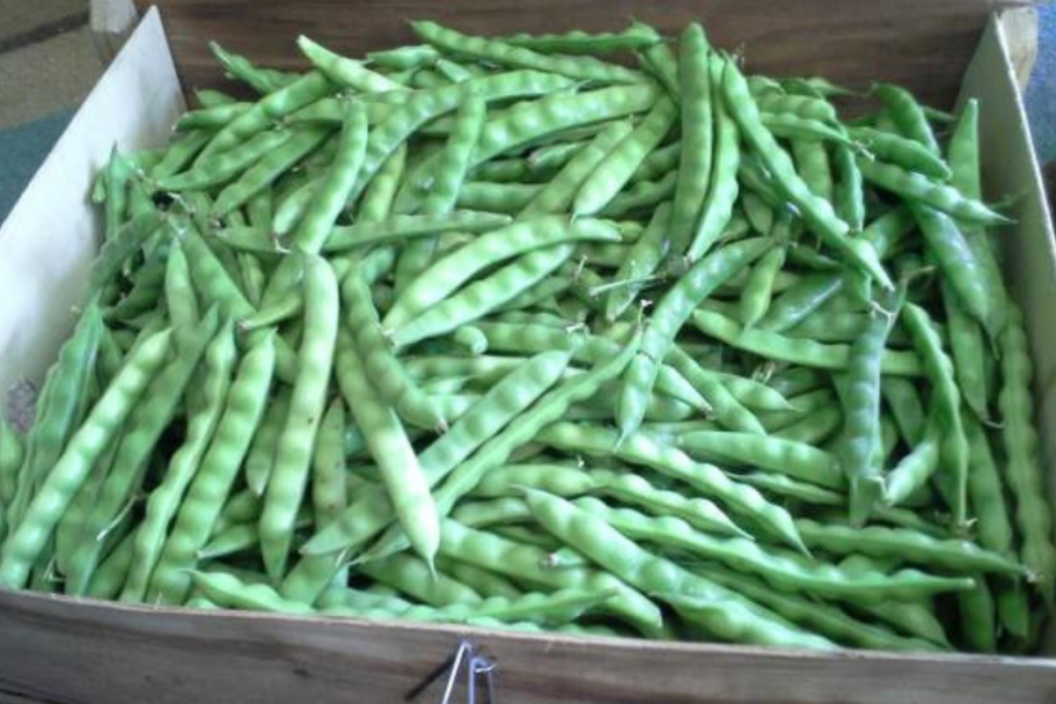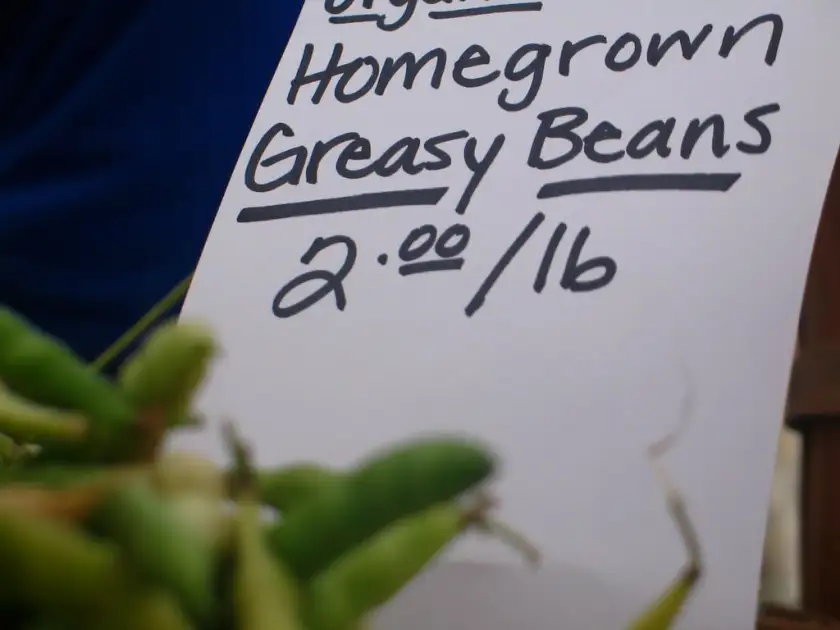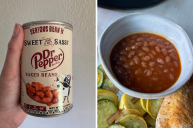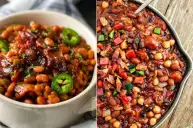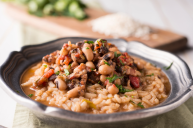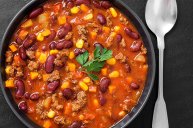As a kid, I spent hours shelling peas and snapping green beans from the family garden. I probably complained about the chore, but I never complained about eating the good food that resulted from that work. It's much easier to get beans canned or frozen from the grocery store, but that means getting generic, stringless beans that taste fine but aren't anything special. Fortunately, if you look in the right place, you can still find unusual beans like half-runners, shuck beans, preacher beans, pole beans, and greasy beans.
These heirloom bean varieties are like nothing you get in a big grocery store today, but they are so worth finding and trying. In particular, if you're a green bean fan, you really need to try greasy beans. Sure, the name makes them sound a little unappetizing, but like so many delicious foods with off-putting names, give this one a try and you'll see why you should look past the name.
What are Greasy Beans?
Greasy beans originated in West Carolina and are a heirloom snap bean with a slick pod and no fuzz. When you cook them, the pod turns shiny, which is why they're called greasy beans. The name doesn't have anything to do with texture or taste, only the outer appearance.
Uncooked, they look like a cross between a regular green bean and field peas like black-eyed peas. The bean pods are long, straight, bright green and bumpy.
Like heirloom tomatoes, these beans come from heirloom seeds, saved and passed down by generations of families. Bill Best, founder of the Sustainable Mountain Agriculture Center (which recently moved from Berea, Kentucky to Livingston, Tennessee) says that most greasy bean varieties are found in western North Carolina and eastern Kentucky. Growers love to grow the Appalachian heirloom variety.
Best also notes that greasy beans are "widely thought to be the highest quality beans and are by far the highest-priced, bringing two to ten times as much as other beans" at Appalachian farmers markets where the beans are sold.
How to Cook Greasy Beans
If you're lucky enough to find greasy beans, here's the best way to prepare them. First, you need to string them (and yes, you have to take the strings off). Hold the bean in one hand and, using your thumbnail from your other hand, pinch or snap the curved tip of the bean down, then pull gently to de-string. When you get to the other end of the bean, do the same thing.
Snap the long beans into two or three short pieces, then wash the short bean pieces well in a colander. Place the beans in a heavy-bottom saucepan and cover them with water. Add the seasonings of your choice; at the very least, you should use salt and olive oil. Salt pork, bacon, or ham is delicious with these beans.
Borrowing Ronni Lundy's cooking method (her cookbook "Victuals" is my go-to for Appalachian food), greasy beans need to cook low and slow. Your time will vary, but they need to simmer until the beans inside the pods are tender, which could take around an hour. It sounds like a lot of time, but these are different from the beans you get in grocery stores, which are designed to be fast to cook.
For a flavorful recipe involving bacon, garlic powder, pepper, salt, and onion, check out Quiche My Grits. This tasty Southern recipe is a great way to experience greasy beans for the first time, since they'll be full of flavor and will be a delectable side for any dish. Enjoy them alongside meatloaf or grilled chicken for a touch of tasty veggies!
Where to Find Heirloom Beans
The best way to find heirloom beans is to grow them yourself. You can find heirloom seeds like Long Greasy Cut Short, Pink Tip Greasy, Cherokee Greasy and (my personal favorite name) Lazy Daisy Greasy for sale on the Sustainable Mountain Agriculture Center site.
You'll also see greasy bean varieties named after people: there's the Tommy Boyd, the Mary Moore, the Hill Family, the Fox Family, and the Lazy Wife (which hopefully wasn't actually meant for a particular person). We have these seeds today because families kept seeds from each harvest and passed them down, and because of seed savers like Bill Best who have led the way in promoting heirloom foods.
If you're not ready to grow your own, plan a road trip to Appalachia and find a local farmers market so you can bring back some of these heirloom greasy beans.
